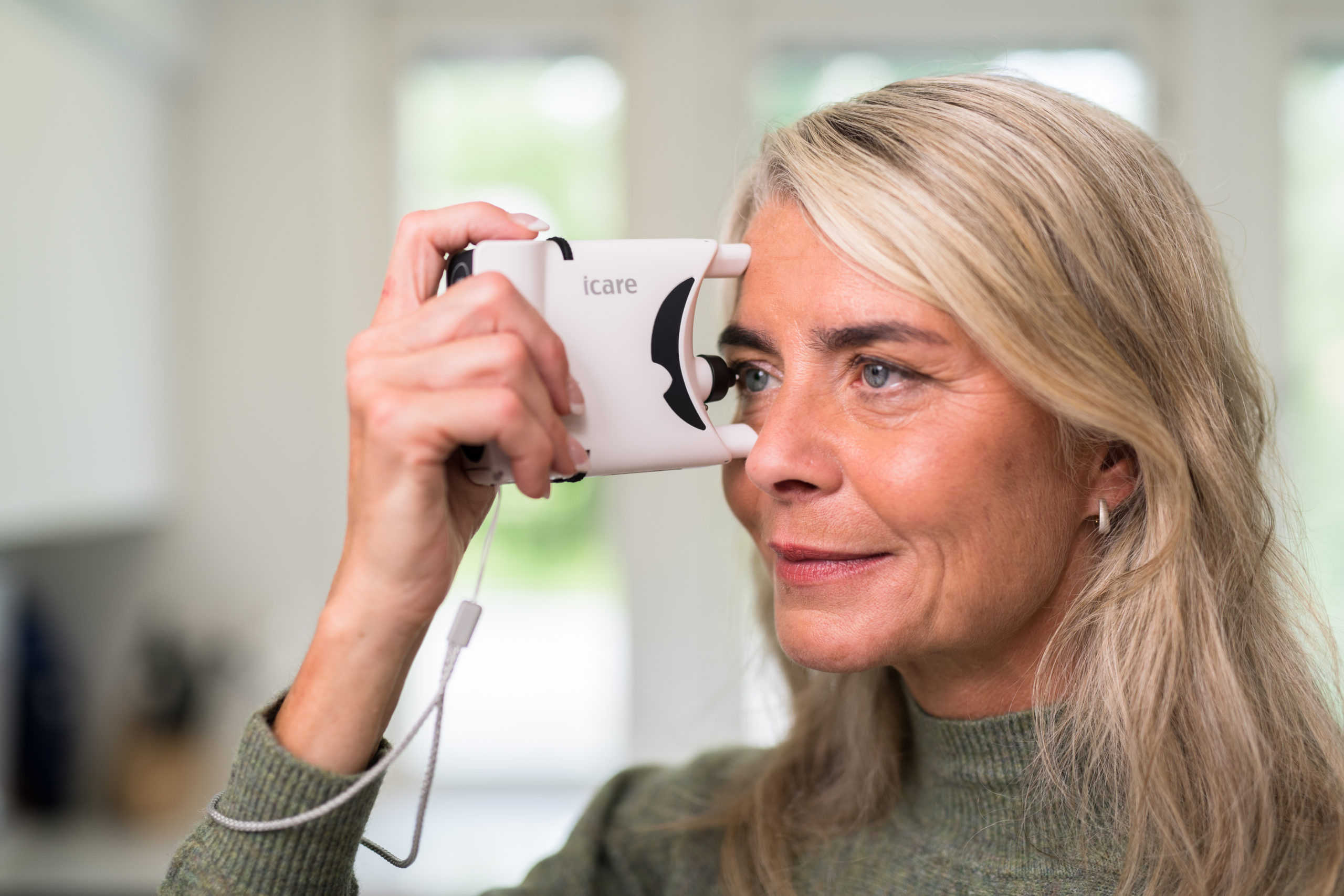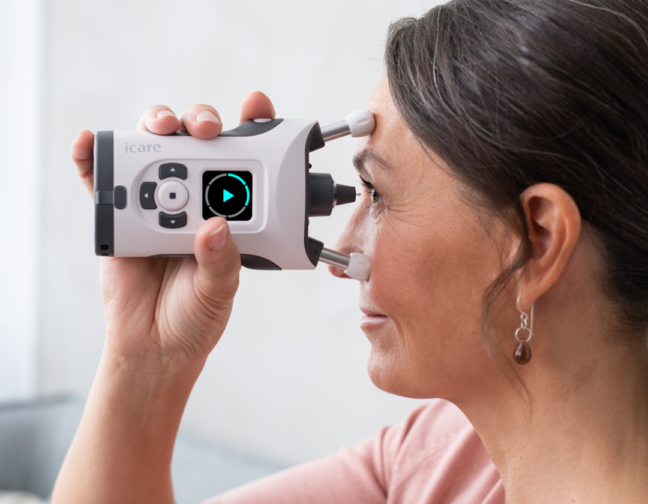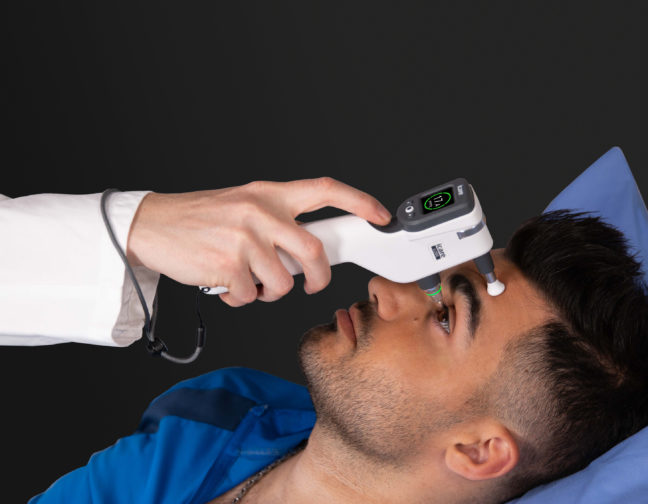Clinical findings suggest that the iCare HOME tonometer provides similar measurement results to GAT as well as being easy to use and well accepted by patients. An example patient case highlights how the device can be used to guide and customize glaucoma management.
Drs Liu, De Francesco, Schlenker, and Ahmed review the characteristics and clinical utility of the iCare HOME self-tonometer in their article published in Clinical Ophthalmology*. According to the review, iCare’s self-tonometer device demonstrates excellent potential to transform the traditional approach to glaucoma diagnosis and management.
A comprehensive comparison of the iCare HOME tonometer and Goldmann applanation tonometry (GAT) based on numerous studies concludes that iCare HOME produces reasonably similar measurement results to GAT. Patients found the HOME device easy to use and were willing to use it for self-tonometry at home.
Self-measurement of IOP fluctuations for more accurate diagnosis and treatment
Diurnal variation in intraocular pressure is well recognized. However, treatment decisions are often made based on single in-clinic IOP measurements performed with GAT. These measurement results do not show potential IOP fluctuations over a 24-hour period.
The clinical paper suggests extensive monitoring of IOP throughout the day with the help of the iCare HOME self-tonometer can provide eye care professionals with essential data for more accurate diagnosis and treatment of glaucoma.
Case study: customized glaucoma management based on diurnal IOP monitoring
A 61-year-old male patient with advanced glaucoma and visual field progression presented with in-office IOP just below twenty. The patient was on three glaucoma medications in both eyes.
iCare HOME tonometer was prescribed to obtain a more accurate assessment of IOP control, and self-measurement results indicated IOP fluctuations into the thirties in both eyes.
Subconjunctival micro-invasive glaucoma surgery was performed in the left eye, after which the iCare HOME results showed minimal IOP fluctuations in the operated eye.
The patient is currently off glaucoma medications and showed a controlled IOP between 7 and 11 mmHg at a one year postoperative follow up. The right eye has recently undergone the same procedure with similar early results.
Highest clinical benefit in patients with certain types of glaucoma and patients who present with reasonable in-office IOP when it is uncertain if their disease is controlled
Example cases in the study demonstrate how the iCare HOME tonometer can be used clinically to guide and customize glaucoma management. According to the authors, home tonometry would ideally be performed for all glaucoma patients at diagnosis and after therapeutic interventions.
For practical reasons, the article suggests the device may be the most beneficial in patients with certain types of glaucoma including pigment dispersion glaucoma, suspects of angle-closure glaucoma and normal-tension glaucoma, and in patients whose disease progresses despite stable in-office IOPs. The authors have also found the iCare HOME tonometer useful in postoperative IOP control.
Furthermore, home tonometers such as the iCare HOME can prove an invaluable resource as they allow clinicians to maintain follow-up for glaucoma patients without needing to physically see them in the clinic. This facilitates care especially in pandemic times as well as the care of patients living in rural areas.
* Icare Home Tonometer: A Review of Characteristics and Clinical Utility. Clinical Ophthalmology 2020:14 4031–4045.



